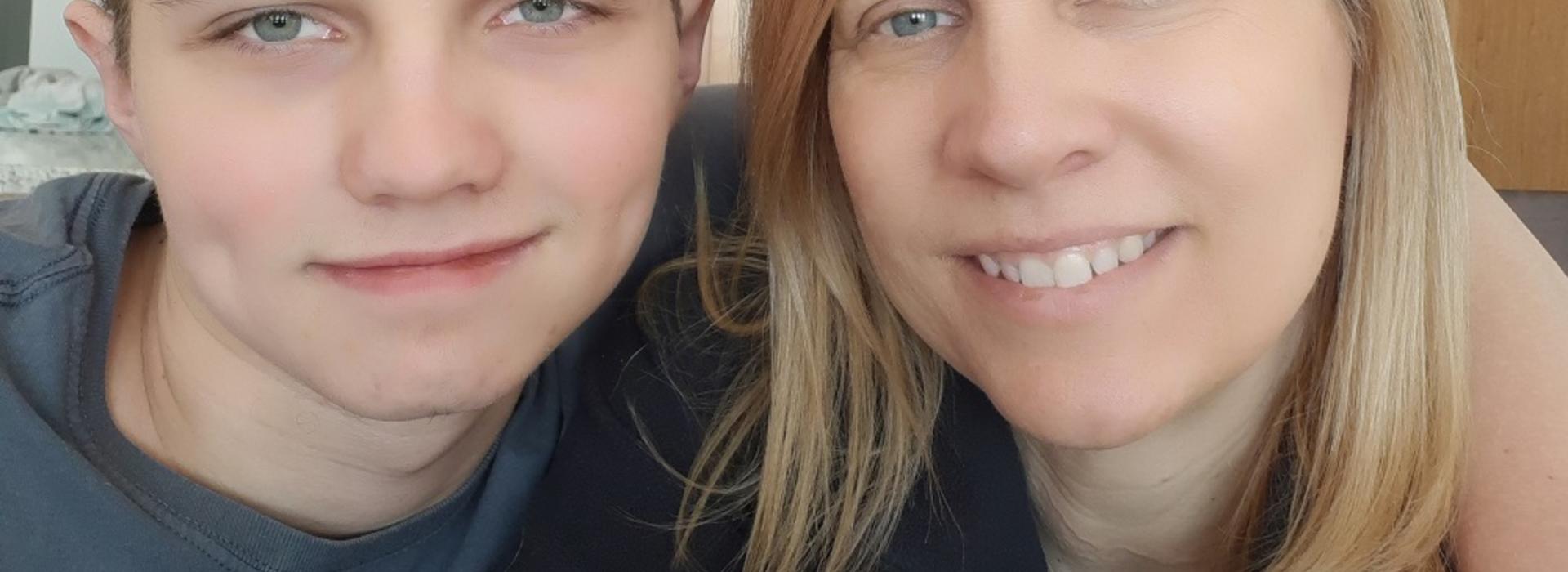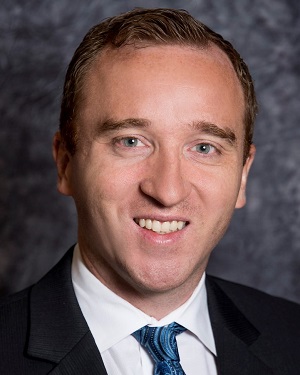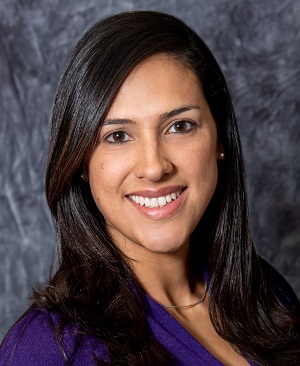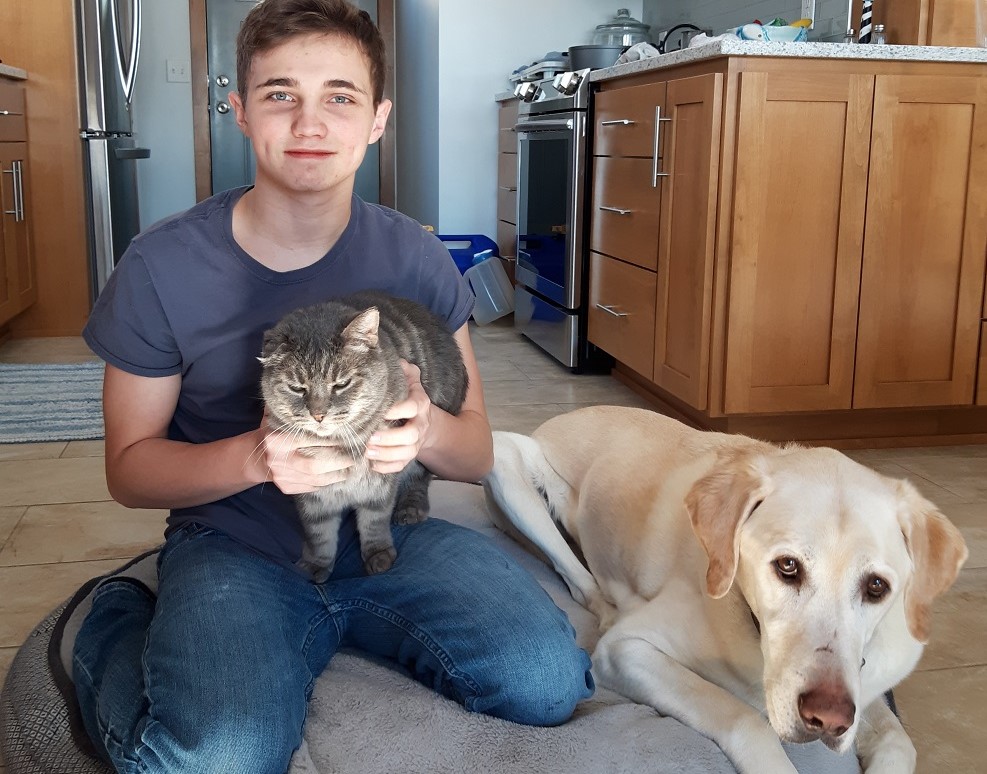
Teenager gets life-changing surgery to relieve his seizures
When you hear 17-year-old Cody Waterhouse talk with pride about his new job – removing snow from driveways and sidewalks – or being able to catch on faster to his schoolwork, you might wonder what happened to make these things such life-affirming experiences.
The Zimmerman (MN) High School junior has an answer ready for you – brain surgery.
First seizure
When Cody was five and on a family vacation to the Grand Canyon, he had his first grand mal seizure. It was then that he was diagnosed with epilepsy, a condition that would shape his days – and his family’s days – from then on.
At first, Cody’s seizures were rare. As he got older, however, they became more frequent – and erratic. “I felt that we couldn’t leave him alone for more than 20 minutes at a time,” said Cody’s dad, Wayne Waterhouse. “There were times when he had two to three seizures a week and then he would go a week without having one.”
Following his seizures, Cody had headaches and fatigue and was often dizzy. Although he had assistance to help him with school, his epilepsy made understanding and getting through his schoolwork difficult. It also made driving impossible. And the various medications prescribed to help him manage the seizures weren’t working very well.
“Cody’s extreme dizziness was a side effect of the medications,” said his mom, Leslie. “Last school year, he was sent home 11 times because the dizziness was so bad he wasn’t able to walk or had vomited. Even with the medication, Cody’s seizures did not always stop. We still needed to give him rescue medication a couple times a year. He even had to have paramedics called to school to help stop a seizure.”
Referred to neurosurgery

About a year ago, the seizure frequency became unmanageable and his epileptologist Minoo Shams-Moorkani, MD, referred him to Robert McGovern (pictured at left), MD, of the U’s Department of Neurosurgery. “When I saw him, Cody was having one or two seizures a week,” said McGovern. “About once a month, he would have a generalized seizure during which he would completely lose consciousness and fall to the ground.”

His M Health Fairview care team, which included McGovern and pediatric neurosurgeon Carolina Sandoval-Garcia (pictured at right), MD, put Cody through several imaging studies. The imaging showed evidence of scarring known as mesial temporal sclerosis in the hippocampus on his brain’s left side. That showed McGovern and Sandoval-Garcia where Cody’s seizures were occurring.
“In right-handed people, their language function is typically centered in the left side of the brain,” said McGovern. “When you want to remove some of the left temporal lobe to reduce or eliminate seizures, you must think carefully about whether that will affect the patient’s speech and comprehension. Taking out a portion of the hippocampus can also affect a person’s memory.”
Deciding where to operate
What frequently happens to people whose hippocampus has been scarred is those capabilities shift to the other side of the brain, according to McGovern. Cody worked with neuropsychologist Eric Waldron, PhD, LP, to determine how much memory was produced on the left side of his brain. “Based on his test results, Cody’s right hemisphere definitely had more capacity for memory than his left,” said McGovern. “We felt better about deciding to remove the left side of the hippocampus because it wasn’t mediating much memory.”
The surgical team also decided to use laser ablation for Cody’s procedure. “It’s a newer, minimally invasive technique,” said McGovern. During the procedure, a small hole is drilled through the skull and a fiber optic probe is inserted into the targeted area. The probe heats up and destroys (ablates) tissue that needs to be removed. “Often, epilepsy can arise from abnormal tissue in the brain, which can cause seizures,” said McGovern. “Laser ablation is perfect for those cases because you can use the laser probe to precisely ablate just that tissue.”
The downside of laser ablation is that post-operative seizure rates are a little higher than with an open craniotomy. “The upside, especially with a younger patient, is that it’s a smaller surgery with a quick recovery,” said McGovern. ‘More people are willing to accept that risk.”
Ideal place for the procedure
The University is an ideal place to get laser ablation for several reasons. “We have an entire team of people who know how to take care of these patients, including epilepsy neurologists, neurophysiologists, neurosurgeons, and neuropsychologists,” said McGovern. “We also coordinate with pediatric neurosurgeons, which enables us to take care of any age range, including those with comorbidities. In addition, we have the technology needed to do these cases, such as the robot arm.”
Even though the procedure would be minimally invasive, it was still brain surgery. “When they first brought it to our attention, we were scared,” said Wayne. “We flip-flopped back and forth … it took us about three months to decide that Cody should have the surgery.”
Robot-guided surgery
In July 2020, McGovern and Sandoval-Garcia performed the procedure. “It went very well,” said McGovern. “It took about three hours, which is typical.” The surgical team used the ROSA robotic system to plan the trajectory of the probe and to place it in Cody’s brain. “We used almost real-time intraoperative MRI to guide the probe,” said McGovern. “The system generates a continuous set of images that shows us what’s happening with the tissue as we heat it up, millimeter by millimeter.”

Cody, who is pictured at left with furry friends, Cinder and Bear, came through the surgery like a trooper. Recovery was a bit difficult for the first two or three days, but after that, he felt much better. “It’s been about seven months since the surgery and I’ve only had a one seizure [about a week after],” he said. His ability to do his schoolwork has also improved. “It’s been incredible,” said Wayne. “His reading and math skills were low before and now he’s picking things up so fast … like a giant sponge. I didn’t think that would happen so quickly.”
Leslie agrees. “We were so surprised by how quickly he recovered,” she said. “It was only a couple weeks after his surgery that he was ready to begin running again, although we did make him wait for the recommended four weeks.” Cody had been in cross county and liked running; however, with his seizures he needed someone to go with him. “Most of the time, I biked along with him while he ran,” Leslie said. “Having your mom follow you on a bike isn’t really what most teenage boys want – so being able to go for a run on his own is even a big deal for him, and feeling comfortable with him going for a run on his own is a big deal for me!”
Do it. Get the surgery.
When Cody is asked what advice he would give someone in the same situation, he says, “Do it. Have the surgery. It helped me a lot and made my life much better and safer.”
Wayne wouldn't hesitate to tell someone they should get the surgery, especially if it’s for a child. “It changed the course of my son’s life," he said. "I thought someone would always have to be with him. Now, he’s living the life of a normal teenager. He never had that opportunity before.”



